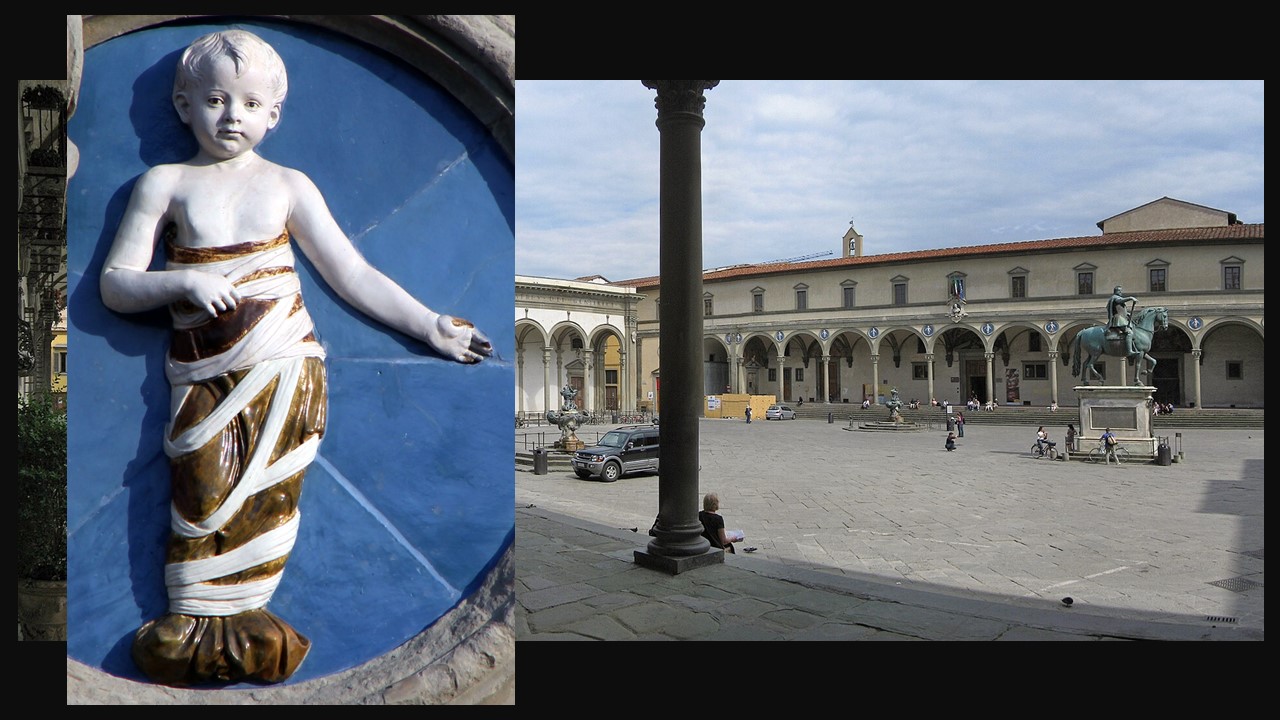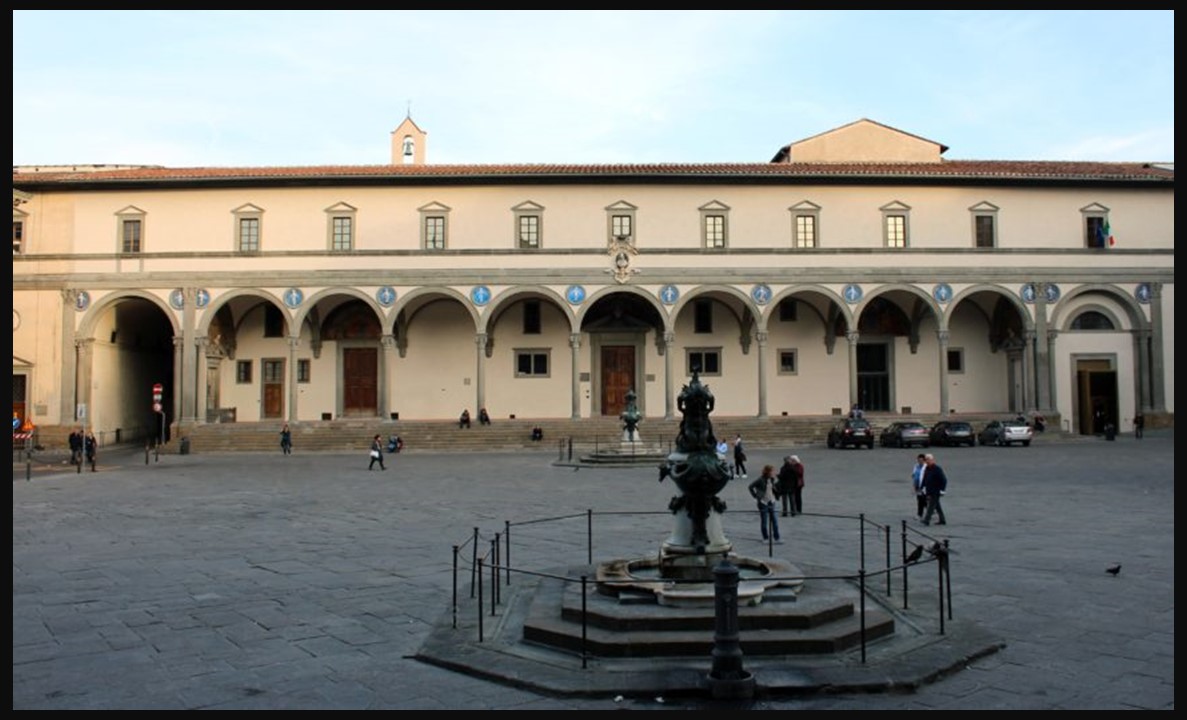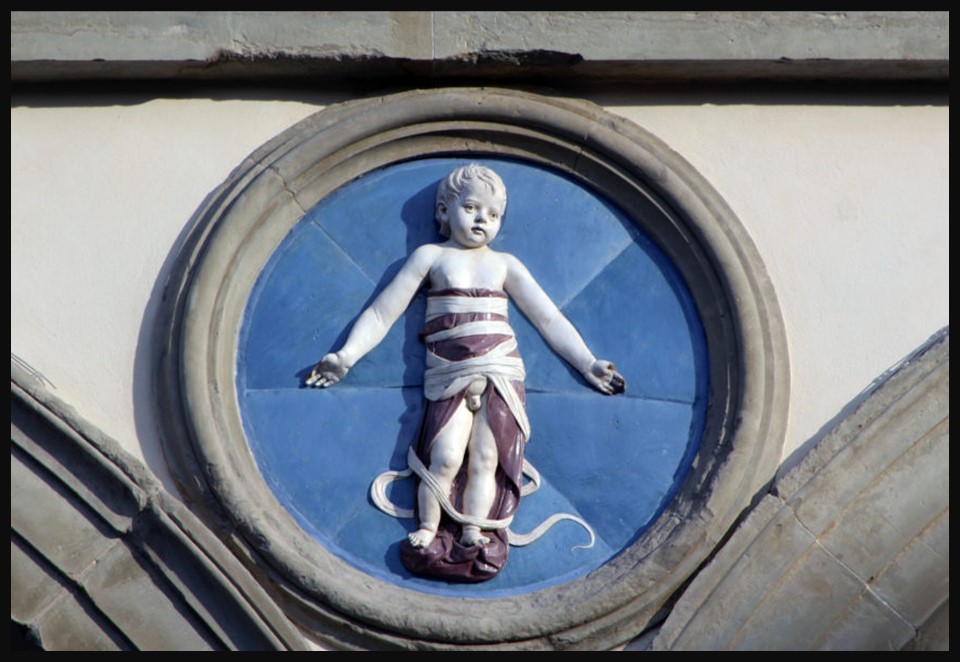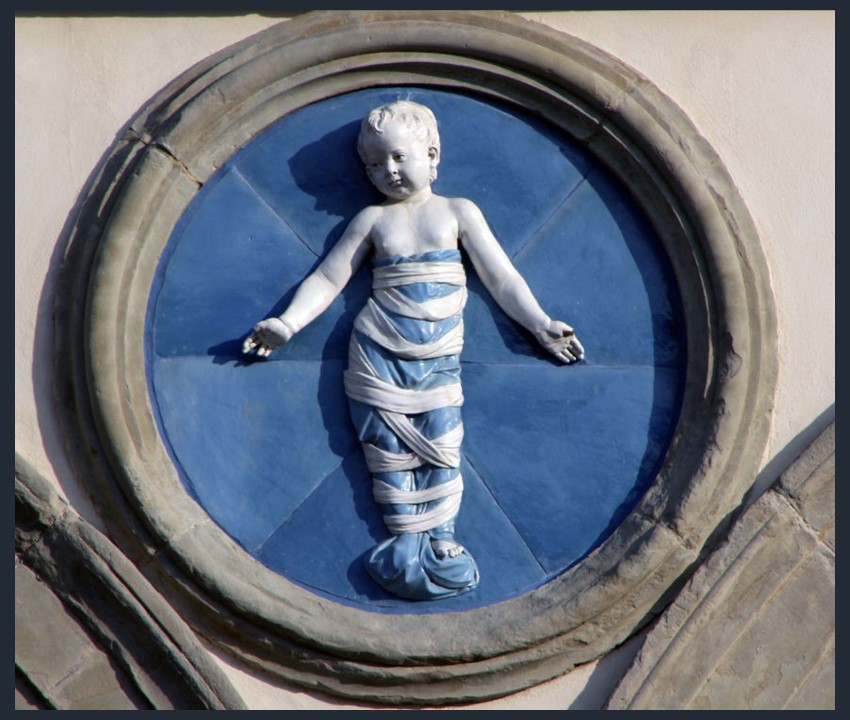
Spedale degli Innocenti, Construction: 1417-1436 – Inauguration: 1445, Piazza della Santissima Annunziata, Florence, Italy https://it.wikipedia.org/wiki/Spedale_degli_Innocenti
Andrea della Robbia, 1435-1525
Infant in Swaddling Clothes, 1487, glazed terracotta, Diameter about 100 cm, Ospedale degli Innocenti, Piazza della Santissima Annunziata, Florence, Italy https://smarthistory.org/andrea-della-robbia-bambini-ospedale-degli-innocenti/
…Mothers, fathers, teachers, nurses, doctors, government leaders, civil society activists, religious and community elders, corporate moguls, media professionals, and even young people and children themselves all have a crucial role to play in making World Children’s Day meaningful within their societies, communities, and nations… In 1954, the United Nations designated the 20th of November as World Children’s Day, aiming to enhance children’s welfare, foster international unity, and raise awareness among children worldwide. …World Children’s Day provides each of us with an inspirational starting point to advocate for, promote, and celebrate children’s rights. This significant celebratory day is described in this manner by the United Nations… The Spedale degli Innocenti in Florence, an architectural masterpiece designed by Filippo Brunelleschi, holds historical significance as the first Renaissance orphanage, serving as a testament to Florence’s compassion and care for innocent children. In honor of this important UN Day, today’s BLOG POST will serve as my humble contribution. https://www.un.org/en/observances/world-childrens-day
Filippo Brunelleschi (1377-1446) was an Italian Renaissance architect, engineer, and designer, known for his innovative contributions to architecture and engineering during the 15th century. He is considered one of the founding fathers of Renaissance architecture and played a crucial role in the development of perspective in painting and the use of linear perspective in architectural design.
Inspired by classical Roman architectural designs, Ospedale degli Innocenti, the Hospital of the Innocents (meaning innocent children), also known in the old Tuscan dialect as the Spedale degli Innocenti, is Brunelleschi’s first Renaissance architectural achievement. Constructed between 1419 and 1445, Ospedale was commissioned by the Arte della Seta (Silk Guild) or the Silk Merchants’ Guild, a powerful economic and cultural organization in Florence.

Spedale degli Innocenti, Construction: 1417-1436 – Inauguration: 1445, Piazza della Santissima Annunziata, Florence, Italy
https://smarthistory.org/andrea-della-robbia-bambini-ospedale-degli-innocenti/
The purpose of the Ospedale degli Innocenti was to serve as an orphanage and foundling hospital, providing care and support for abandoned or orphaned children. The name “Innocenti” emphasizes the institution’s focus on providing care and support to the most vulnerable members of society—orphans and abandoned infants.
If the construction and establishment of the Ospedale degli Innocenti showcased a significant social and cultural development, representing the burgeoning Renaissance ideals of compassion, and humanism, Brunelleschi’s architectural design reflected the changing Renaissance aesthetic and laid the foundation for the Renaissance architectural style that followed. For example, by incorporating classical elements and proportions inspired by ancient Roman and Greek architecture, the building’s facade displayed a harmonious and balanced arrangement of columns, arches, and pilasters, showcasing the influence of classical design principles. Ospedale’s facade is characterized by its symmetrical layout, while its arcades and loggias add elegance and an open design. Thus, Brunelleschi’s building exhibits a sense of equilibrium and balance, a hallmark of Renaissance design influenced by classical ideals.
Let’s not forget how Vasari describes Brunelleschi’s sojourn to Rome and his meticulous investigation of the city’s ancient ruins. Vasari recalls how the artist did not apparently rest …until he had drawn every sort of building–round, square, and octagonal temples, basilicas, aqueducts, baths, arches, colosseum, amphitheaters, and every temple built of bricks, from which he copied the methods of binding and of clamping with ties, and also of encircling vaults with them; and he noted the ways of making buildings secure by binding the stones together by iron bars, and by dovetailing… He then distinguished the different Orders one from another–Doric, Ionic, and Corinthian; and so zealous was his study that his intellect became very well able to see Rome, in imagination, as she was when she was not in ruins. https://filippobrunelleschifacts.tumblr.com/post/109790232722/vasaris-lives-of-the-artists-life-of
Spedale degli Innocenti is the ‘canvas’ of yet another great master of Italian Renaissance art, that is Andrea della Robbia. In 1487, according to Dr. Rachel Boyd, Andrea della Robbia was hired to fill the loggia’s roundels (Brunelleschi’s design intentionally left the roundels on the loggia facade unadorned) with colorful works of art. Described as bambini di terra (“babies made of clay”) in an original payment record, these high-relief sculptures were made in glazed terracotta, a distinctive medium that was the signature of the Della Robbia family workshop. https://smarthistory.org/andrea-della-robbia-bambini-ospedale-degli-innocenti/

Infant in Swaddling Clothes, 1487, glazed terracotta, Diameter about 100 cm, Ospedale degli Innocenti, Piazza della Santissima Annunziata, Florence, Italy https://smarthistory.org/andrea-della-robbia-bambini-ospedale-degli-innocenti/
The Della Robbia roundels in the Ospedale degli Innocenti are celebrated for their artistic beauty, mastery of ceramic technique, and their contribution to the visual identity of one of Florence’s historic landmarks. The babies are rendered with a remarkable degree of realism and naturalism. The facial features, anatomy, and proportions of the infants are meticulously crafted, displaying a lifelike quality that adds to their charm and appeal. Their cherubic faces and gentle expressions convey a sense of innocence and serenity, evoking a feeling of tenderness and care.

Infant in Swaddling Clothes, 1487, glazed terracotta, Diameter about 100 cm, Ospedale degli Innocenti, Piazza della Santissima Annunziata, Florence, Italy https://smarthistory.org/andrea-della-robbia-bambini-ospedale-degli-innocenti/
I could easily add that the artistic qualities of the depicted babies in Andrea della Robbia’s glazed terracotta roundels include a blend of realism, expressive features, symbolism of childhood, and a mastery of the glazed terracotta technique, resulting in a timeless and captivating representation of infancy and innocence. What an achievement!
For a PowerPoint on Brunelleschi’s Oeuvre, please… Check HERE!
Bibliography: https://www.museodeglinnocenti.it/en/ and https://www.artesvelata.it/ospedale-portico-innocenti-brunelleschi/ and https://www.istitutodeglinnocenti.it/en/about-us/history